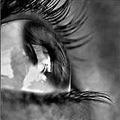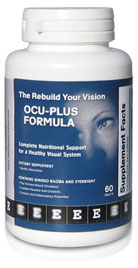|
Retinitis Pigmentosa Information
Retinitis Pigmentosa occurs whenever there is an injury or damage done to The Retina. The retinas purpose is to convert any light into tangible images and then transmit its findings to the brain. In order for it to be classified as pigmentosa, the retina must show that there are several genetic Eyesight Disorder present. When pigmentosa progresses, many people will experience night blindness or tunnel vision. How fast the Eye Diseases progresses to absolute blindness greatly depends on the type of person who has pigmentosa. Some have started to go slowly blind in their elder years, but others who have this have gone completely blind when they were children. Retinitis pigmentosa is considered a type of progressive retinal dystrophy. Basically comprising of several inherited disorders, which cause irregularities in the photoreceptors or the retinal pigment epithelium of the Retina. This irregularities cause the retina to have a Loss of Vision over a period of time. People who first start to experience pigmentosa will have problems adapting to darkness or will have night blindness. This is typically followed by tunnel vision where the person can only see selected amounts of space. At the tail end of the condition, the person will lose all visual sensations and become blind. Since retinitis pigmentosa is a genetic condition, it is very likely that other members of the family also have this disease. The cells that help adapt to night vision are called rods and these are typically the ones that have become affected. Retinal cone cells have also been shown to be damaged, but this only occurs in some cases. When an Eye Care Professional or Eye Care Specialist looks into your eyes, he or she can see black pigments floating around in the retina.
People who have been diagnosed with this might start to develop Cataracts or experience a swelling retina. These can be removed if it starts to affect eyesight, but other complications might occur such as Myotonic dystrophy, Laurence-Moon syndrome, Usher syndrome, etc. So how do you Protect Your Eyesight? Well, there is no real answer for such a condition. Since it occurs from a genetic defeat and not a foreign substance, it is very hard to treat. However, wearing protective Sunglasses to help ward off any extra ultraviolet rays could help protect the deterioration process. Studies show that people who eat foods rich in vitamin A can greatly help slow down the disease. Nothing beats a healthy diet with the right balance of Vitamins and Minerals when it comes to preventing an Eyesight Problem. However, sometimes in order for this to work the person must take high contracted amounts of vitamin A, which will end up hurting the liver. The doctor should make sure that you understand that you are trading a healthy liver for healthy eyes if this is the case.

Subscribe to EyeSight Vision Care! , our monthly newsletter with in depth information to help you keep up to date on how to Protect Your Eyesight with a free bonus. Fill out the form below. You'll then receive an email asking you to confirm that you subscribed. You'll always have the option to unsubscribe at the click of your mouse. Retinitis Pigmentosa to Eye Diseases
|
More Information





















